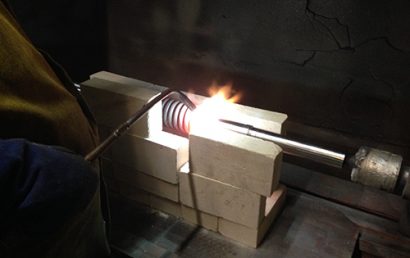Thermal Spray Coating Vs. Traditional Protection: Which Is Better?
Coatings protect substances from wear or corrosion within physical or chemical mixing with the surroundings. Various procedures might be employed to undertake proper surface protection in specific conditions. Thermal spray coating is compared with traditional protection below.
Thermal Spray Coating
Thermal spraying includes a group of coating processes in which finely divided metallic or non-metallic materials are accumulated in molten or semi-molten conditions to develop a coating. The process is usually performed at atmospheric pressure in the air except plasma spraying, which essentially serves in a soft vacuum. Additionally, DC plasma spraying can be performed in an inert atmosphere or vacuum, and cold spray is usually performed at atmospheric pressure; however, in a controlled atmosphere chamber to collect and recycle the spray gas due to significant gas flow rates.
Coating processes using thermal spray wire are used to spray against wear and corrosion and may also protect against heat and service ends. The selection of the spray process is firmly based on the required coating characteristics for the application and coating deposition cost. Coating characteristics are determined by the coating material, the form in which it is offered, and the group of parameters utilized.
A lamellar structure usually features thermal spray coatings. The practical contact between splats and substrate or the earlier deposited layers determines the coating properties like thermal conductivity, Young Modulus, etc. The actual contact region varies from 20 to 60% of the coating surface parallel to the substrate.
The thermal spray coating process involves the arc spray wire material feeding in the hot gas stream. Coatings are developed by flattening and solidifying drops impacting the covered part. These drops can be slightly or fully melted when released from powders or when they develop from atomization.
The variety of corrosions, notably for coatings, can be categorized as – general corrosion following about 30% damage where the average corrosion rate on the material surface is uniform and localized corrosion resulting in 70% failures. Other types are galvanic corrosion, which occurs when two different metals interact in a conductive solution, an anodic metal being corroded when the more cathodic one is unaffected. The electrolyte plays a significant role.
Monel 400 Wire as corrosion protection – To protect application materials from different types of corrosion, Monel 400 Wire is used as a thermal spray coating. The Coating is performed constantly and requires very high corrosion-resistant materials like Inconel 625 wire to protect materials from all kinds of corrosion. Intergranular corrosion occurs when a chemical element is damaged during coating or bulk material production; for example, in heat processing, pitting is localized corrosion resulting from depression or pit development on the surface. It occurs in chloride-based solutions. Another type of corrosion is trans granular corrosion, which occurs due to high static tensile stress in a corrosive media. The attack can be intergranular or transgranular. The coating material and microstructure play an essential role in this corrosion.
Thermal Spray Coating Compared to Traditional Protection
Coatings offer suitable protection against corrosion. Corrosion wear occurs when corrosion and wear are combined, causing a faster degradation of the material. A corroded or oxidized surface can be more likely damaged at a higher rate. In many cases, the surface to be protected is enormous, which makes thermal spray coating more economical than painting and other traditional protection processes.



